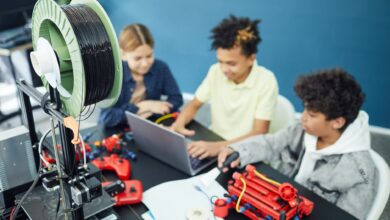The Student Perspective: Exploring Online Classes

Introduction
The COVID-19 pandemic has disrupted our lives and necessitated significant changes in our daily routines. The education sector, in particular, has witnessed a remarkable shift towards online classes as a means of delivering education during these challenging times. This article delves into the opinions and experiences of students regarding online classes, highlighting both the benefits and challenges associated with this mode of learning.
Embracing Online Education
With the closure of schools and physical distancing measures, online education quickly emerged as a crucial solution to ensure continuity in learning. Students around the world found themselves adapting to a new normal, relying on digital platforms to receive their education. Online classes became the lifeline that connected students with their teachers, allowing the learning process to proceed despite the limitations imposed by the pandemic.
Benefits of Online Classes
For many students, online classes have been a blessing during the lockdown period. It provided a means to stay connected with the world of education and prevent a complete disruption of learning. Teachers proactively explored various solutions to create engaging and interactive online learning environments, ensuring that students’ education was not compromised. The advantages of online classes include:
Accessibility and Convenience
Online courses offer easy access to digital files and resources, allowing students to organize and store their notes and assignments without the risk of physical damage. With just a click, students can retrieve their materials and engage with learning content effortlessly. Advanced technology has made online learning not only convenient but also enjoyable, incorporating interactive elements that transform traditionally perceived “boring” subjects into engaging and immersive experiences.
Flexibility and Global Reach
One of the significant advantages of online classes is the flexibility it offers. Students can attend classes from anywhere in the world, as long as they have internet access. This global reach ensures that education is not confined to physical boundaries, opening doors for international collaborations and diverse perspectives. The integration of interactive applications and platforms enables students to express their views simultaneously, fostering collaborative learning experiences.
Independent Learning and Skill Development
Online classes empower students to become independent learners, equipping them with the necessary skills for the real world. Students have the opportunity to explore a wide range of learning applications and platforms, fostering the development of new skills and abilities. The online environment encourages self-direction and self-paced learning, enabling students to take ownership of their education and accelerate their personal growth trajectory.
Challenges of Online Classes
While online classes have been instrumental in ensuring continuity in education, they also present certain challenges that students must navigate. Some of the notable challenges include:
Lack of Physical Interaction and Social Development
Traditional classroom settings provide opportunities for face-to-face interactions and social development. Physical interactions with peers and teachers foster essential skills such as empathy, cooperation, and socialization. The absence of physical interaction in online classes may limit the holistic development of students, particularly those in the early developmental years.
Focus and Distractions
Staying focused during long periods of screen time can be challenging for students. The abundance of distracting content available on the internet poses a constant temptation that can lead to reduced concentration and engagement. Teachers have recognized this challenge and have made efforts to design their online courses to be concise, interactive, and captivating to maintain student focus.
Technical Limitations and Connectivity Issues
Reliable internet access and consistent connectivity are vital for successful online learning. While internet infrastructure has improved significantly, some regions still face challenges in accessing high-speed internet. Inconsistent internet connections can disrupt the learning experience and hinder active visual presence, which is crucial for monitoring student engagement. Technical limitations and connectivity issues can create barriers to effective participation in online classes.
Class and Socioeconomic Disparities
Not all students have equal access to online education. The lack of smartphones, laptops, or reliable internet connectivity can prevent certain students from fully engaging in online classes. This disparity can exacerbate existing class and socioeconomic differences in access to quality education.
Conclusion
Online classes have become an integral part of education during the COVID-19 pandemic. While students have embraced this mode of learning, recognizing its benefits in terms of accessibility, convenience, and skill development, they also face challenges related to focus, technical limitations, and social interaction. It is crucial for educational institutions and policymakers to address these challenges and bridge the gaps to ensure equitable access to education for all students. By leveraging the strengths of online education while mitigating its limitations, we can create a balanced and effective learning environment that prepares students for the digital era and beyond.












